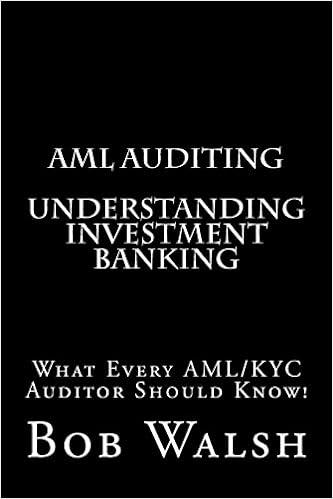Question
Consolidated gain or loss on constructive retirement of debt Assume that a Parent Company owns 100 percent of its Subsidiary. Each of the following independent
Consolidated gain or loss on constructive retirement of debt
Assume that a Parent Company owns 100 percent of its Subsidiary. Each of the following independent scenarios describes an intercompany bond transaction between the Parent and the Subsidiary. For each independent case, determine the amount of gain or loss on constructive retirement of the bond reported in the consolidated income statement for the year ended December 31, 2019. Assume straight-line amortization.
a. On June 30, 2019, P issues directly to S bonds that have a par value of $100,000. S paid $104,000 for the bonds. The term of the bonds is 10 years and they have an 8 percent stated interest rate. Interest is paid annually on December 31.
b. On January 1, 2015, P issues to an unaffiliated company bonds that have a par value of $100,000. The unaffiliated company paid par value for the bonds. On December 31, 2019, S paid $70,000 for 70 percent of the outstanding bonds. The bond term is 10 years and they have an 8 percent stated interest rate. Interest is paid annually on December 31.
c. On January 1, 2015, P issues to an unaffiliated company bonds that have a par value of $100,000. The unaffiliated company paid 103 percent of par value for the bonds. Five years later, S paid $95,000 for all of the outstanding bonds. The bond term is 10 years and they have an 8 percent stated interest rate. Interest is paid annually on December 31.
d. On January 1, 2015, S issues to an unaffiliated company bonds that have a par value of $100,000. The unaffiliated company paid 96 percent of par value for the bonds. Five years later, P paid $72,000 for 70 percent of the outstanding bonds. The bond term is 10 years and they have an 8 percent stated interest rate. Interest is paid annually on December 31.
Note: If there is no gain or loss, enter zero for the amount and select N/A for Gain or Loss answer.
a.
b.
c.
d.
Step by Step Solution
There are 3 Steps involved in it
Step: 1

Get Instant Access to Expert-Tailored Solutions
See step-by-step solutions with expert insights and AI powered tools for academic success
Step: 2

Step: 3

Ace Your Homework with AI
Get the answers you need in no time with our AI-driven, step-by-step assistance
Get Started


